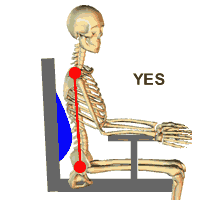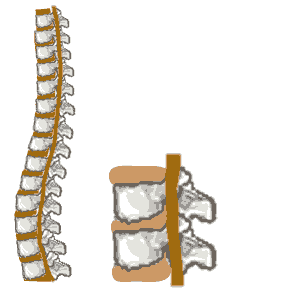|
Sitting
is a chance for your back to recover from the stresses
of daily
activities*. You can enjoy this recovery if your
seat supports your back well.
It should allow the muscles, ligaments
and tendons in your back to relax,
and align the spine so that the
discs between your vertebrae are a nice even shape. A good
seat will also give you low pressure under the large muscles
of the
buttocks and thighs, to maintain their blood flow. *If
you hardly have any daily activities, because your job is
sitting down all day, remember you need to exercise
to keep your back in good shape!
|




